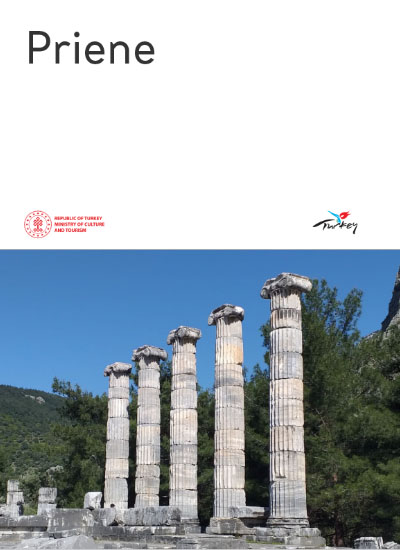Athena Sanctuary The sanctuary can be accessed through the monumental gate known as the propylon. Upon entering, one will find a rectangular structure that is empty, but can be reached through numerous pillars and entablature pieces. Adjacent to this structure is an altar that dates back to the 2nd century BC. The altar was once adorned with figured reliefs. To the left of the altar is the temple, which is separated from the altar by an architrave with a Greek inscription. The pedestal remains of Athena's cult statue have been preserved at the back to the west. Pytheos ushered in a new era in temple architecture by providing all plan elements with measurements based on a single module. Theater This is the only example in Western Anatolia that did not undergo significant additions during the Roman Period. Games were organized in honor of the god Dionysus at the bottom, but later they were moved to the Proskenion, which was covered with wooden flooring. The altar of Dionysus still stands at the edge of the orchestra at the back. Bouleuterion The Prytaneion served as the official workplace for the city's executive committee and also hosted foreign diplomats. Hestia's holy fire burned continuously within the building. The Prytaneion could accommodate at least 500 councilors. Although it has undergone numerous changes over time, the structure still contains a restored altar with god busts. East Gate The East Gate was formerly Priene's most magnificent gate. It marked the beginning of the road leading to the neighbouring city of Magnesia, passing through grave sites in front of the city walls. Basilica The Basilica, which is the church of the Episcopal, was constructed in the 5th to 6th centuries AD using reused materials, including structural elements from the southern gallery of the Temple of Athena. The priest's lectern (ambon) is located in the centre of the church, with the half-round apse situated to the east.
PRIENE ARCHAEOLOGICAL SITE


